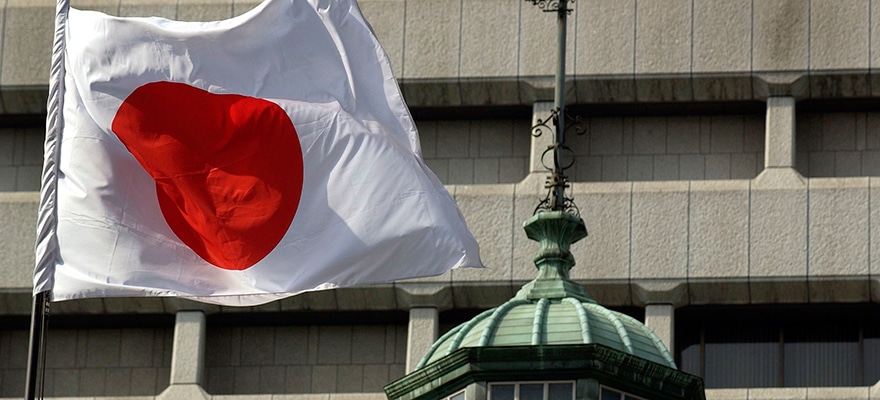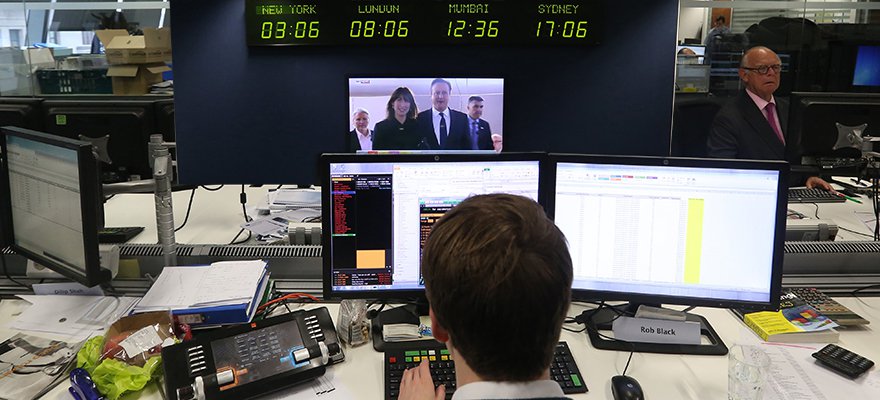It wasn’t that long ago that the notion of central banks adopting a policy of negative interest rates was unthinkable. How quickly times have changed.
The new world of online trading, fintech and marketing - register now for the Finance Magnates Tel Aviv Conference, June 29th 2016.
This month even International Monetary Fund head Christine Lagarde said that the recent introduction of negative interest rates by the ECB and Bank of Japan (BoJ) were “net positives” given the current circumstances.
3rd largest economy
The economic realities of our post-financial crisis world have promoted no fewer than five developed market central banks to pursue a negative interest rate policy: Japan; Denmark; the euro region; Sweden and Switzerland. The BoJ in particular caught everyone’s attention at the start of the year with its introduction of a new sub-zero rates regime. Japan is the world’s 3rd largest economy and at least a third of all Asian GDP.
Each central bank has its own reasons for introducing such a radical policy, but ultimately they are all seeking to safeguard their respective economies and counter deflation. It seems to me that with no end in sight to the global levels of low growth, an ageing global population, high levels of government debt and falling productivity this situation is now the new normal.
High-yield securities
Of course, such an environment makes it even harder for investors to generate income and increases the pressure to locate positive yield. While this new world of negative interest rates is uncharted territory, it may actually prompt financial firms to create new and innovative trading strategies, resulting in the current flight-to-quality taking place in most developed markets.
We are already seeing investors increasingly turn to high-quality, high-yield securities such as US Treasuries or UK gilts. Traditional haven assets are also doing well from this situation, such as gold or, somewhat ironically, Japanese yen. There is also a notable uptick in riskier alternative investments such as corporate credit or emerging market sovereign debt.
Hedge funds
And while traditional hedge funds have performed poorly in the past few years, macro-hedge funds specialising in bonds and currencies have performed well in comparison.
The increased Volatility
Volatility
In finance, volatility refers to the amount of change in the rate of a financial instrument, such as commodities, currencies, stocks, over a given time period. Essentially, volatility describes the nature of an instrument’s fluctuation; a highly volatile security equates to large fluctuations in price, and a low volatile security equates to timid fluctuations in price. Volatility is an important statistical indicator used by financial traders to assist them in developing trading systems. Traders
In finance, volatility refers to the amount of change in the rate of a financial instrument, such as commodities, currencies, stocks, over a given time period. Essentially, volatility describes the nature of an instrument’s fluctuation; a highly volatile security equates to large fluctuations in price, and a low volatile security equates to timid fluctuations in price. Volatility is an important statistical indicator used by financial traders to assist them in developing trading systems. Traders
Read this Term in Japan is stimulating trading in a number of key assets. Global fund managers are increasingly recognising the appeal of Japan’s highly liquid stocks, with equity and equity index futures up substantially compared to a year ago.
Japan
The Japan Exchange Group (JPX) reported 72 million equity trades in February this year, up from 60 million year-on-year.
Major JPX equity index futures also increased dramatically in the same period, up from February 2015’s 18 million contracts to 32.2 million traded last month. Foreign investors, who have steered clear of Japanese bonds for some time now, are also being attracted back following the introduction of a negative rates regime.
Buying bonds at such low yields is not without risk of course, especially considering the violent price swings which have hit the bond markets of US and Japan in recent years. However, volatile conditions do make for profitable trading opportunities for those with the right strategies and mind-set.
And what about the new opportunities for Japanese investors as well? The negative rates regime has created tangible benefits for firms who can connect from Japan into international markets.
In a recent Bloomberg survey, eight out of 11 Japanese regional banks claimed they’d already begun or are considering buying securities outside of their home market. In addition, individual Japanese investors are also looking for better returns, mostly by moving yen into US Treasuries and the US dollar.
US and European brokers can capitalise on this new client demand by tailoring services to meet their unique requirements. Financial firms can also leverage intermarket trading strategies between negative and positive rate regimes to capitalize on these spreads. I’d opine that this is the new carry trade.
Low rates
Further, a number of analysts are suggesting the US Fed may push rates below zero - or at least that it is a possibility.
We have now seen these negative rates policies in action and, contrary to all expectations, there seems to be little adverse impact on financial market function and there is little evidence of the dire predictions of cash hoarding by individuals.
In fact, the potentially positive outcomes of pursuing such policies may provide some much needed reassurance for investors in countries where negative rates have not yet been adopted.
Ultimately, the role of central banks is to support economic growth and employment. The BoJ’s negative interest rates regime may be controversial, but after years of deflation such drastic measures may provide the extra stimulus necessary to reinvigorate its financial markets.
Japanese Prime Minister Shinzo Abe has been promoting their rise in wages and an upturn in investment opportunities.
Japan’s volatile equity and bond markets are actively attracting investors both at home and abroad, while the appeal of better returns is also creating a new class of Japanese investor - and ambitious global firms will do well to cater to these.
Perhaps it’s time to view the negative rates environment as a unique opportunity, both for firms connecting to Japan and for those in Japan ready to branch out to new assets, products and global markets.
Both actions will bolster Liquidity
Liquidity
The term liquidity refers to the process, speed, and ease of which a given asset or security can be converted into cash. Notably, liquidity surmises a retention in market price, with the most liquid assets representing cash.The most liquid asset of all is cash itself.· In economics, liquidity is defined by how efficiently and quickly an asset can be converted into usable cash without materially affecting its market price. · Nothing is more liquid than cash, while other assets represent
The term liquidity refers to the process, speed, and ease of which a given asset or security can be converted into cash. Notably, liquidity surmises a retention in market price, with the most liquid assets representing cash.The most liquid asset of all is cash itself.· In economics, liquidity is defined by how efficiently and quickly an asset can be converted into usable cash without materially affecting its market price. · Nothing is more liquid than cash, while other assets represent
Read this Term in the financial markets and should ultimately provide the desired results, not just for Japan but for the global economy.
It wasn’t that long ago that the notion of central banks adopting a policy of negative interest rates was unthinkable. How quickly times have changed.
The new world of online trading, fintech and marketing - register now for the Finance Magnates Tel Aviv Conference, June 29th 2016.
This month even International Monetary Fund head Christine Lagarde said that the recent introduction of negative interest rates by the ECB and Bank of Japan (BoJ) were “net positives” given the current circumstances.
3rd largest economy
The economic realities of our post-financial crisis world have promoted no fewer than five developed market central banks to pursue a negative interest rate policy: Japan; Denmark; the euro region; Sweden and Switzerland. The BoJ in particular caught everyone’s attention at the start of the year with its introduction of a new sub-zero rates regime. Japan is the world’s 3rd largest economy and at least a third of all Asian GDP.
Each central bank has its own reasons for introducing such a radical policy, but ultimately they are all seeking to safeguard their respective economies and counter deflation. It seems to me that with no end in sight to the global levels of low growth, an ageing global population, high levels of government debt and falling productivity this situation is now the new normal.
High-yield securities
Of course, such an environment makes it even harder for investors to generate income and increases the pressure to locate positive yield. While this new world of negative interest rates is uncharted territory, it may actually prompt financial firms to create new and innovative trading strategies, resulting in the current flight-to-quality taking place in most developed markets.
We are already seeing investors increasingly turn to high-quality, high-yield securities such as US Treasuries or UK gilts. Traditional haven assets are also doing well from this situation, such as gold or, somewhat ironically, Japanese yen. There is also a notable uptick in riskier alternative investments such as corporate credit or emerging market sovereign debt.
Hedge funds
And while traditional hedge funds have performed poorly in the past few years, macro-hedge funds specialising in bonds and currencies have performed well in comparison.
The increased Volatility
Volatility
In finance, volatility refers to the amount of change in the rate of a financial instrument, such as commodities, currencies, stocks, over a given time period. Essentially, volatility describes the nature of an instrument’s fluctuation; a highly volatile security equates to large fluctuations in price, and a low volatile security equates to timid fluctuations in price. Volatility is an important statistical indicator used by financial traders to assist them in developing trading systems. Traders
In finance, volatility refers to the amount of change in the rate of a financial instrument, such as commodities, currencies, stocks, over a given time period. Essentially, volatility describes the nature of an instrument’s fluctuation; a highly volatile security equates to large fluctuations in price, and a low volatile security equates to timid fluctuations in price. Volatility is an important statistical indicator used by financial traders to assist them in developing trading systems. Traders
Read this Term in Japan is stimulating trading in a number of key assets. Global fund managers are increasingly recognising the appeal of Japan’s highly liquid stocks, with equity and equity index futures up substantially compared to a year ago.
Japan
The Japan Exchange Group (JPX) reported 72 million equity trades in February this year, up from 60 million year-on-year.
Major JPX equity index futures also increased dramatically in the same period, up from February 2015’s 18 million contracts to 32.2 million traded last month. Foreign investors, who have steered clear of Japanese bonds for some time now, are also being attracted back following the introduction of a negative rates regime.
Buying bonds at such low yields is not without risk of course, especially considering the violent price swings which have hit the bond markets of US and Japan in recent years. However, volatile conditions do make for profitable trading opportunities for those with the right strategies and mind-set.
And what about the new opportunities for Japanese investors as well? The negative rates regime has created tangible benefits for firms who can connect from Japan into international markets.
In a recent Bloomberg survey, eight out of 11 Japanese regional banks claimed they’d already begun or are considering buying securities outside of their home market. In addition, individual Japanese investors are also looking for better returns, mostly by moving yen into US Treasuries and the US dollar.
US and European brokers can capitalise on this new client demand by tailoring services to meet their unique requirements. Financial firms can also leverage intermarket trading strategies between negative and positive rate regimes to capitalize on these spreads. I’d opine that this is the new carry trade.
Low rates
Further, a number of analysts are suggesting the US Fed may push rates below zero - or at least that it is a possibility.
We have now seen these negative rates policies in action and, contrary to all expectations, there seems to be little adverse impact on financial market function and there is little evidence of the dire predictions of cash hoarding by individuals.
In fact, the potentially positive outcomes of pursuing such policies may provide some much needed reassurance for investors in countries where negative rates have not yet been adopted.
Ultimately, the role of central banks is to support economic growth and employment. The BoJ’s negative interest rates regime may be controversial, but after years of deflation such drastic measures may provide the extra stimulus necessary to reinvigorate its financial markets.
Japanese Prime Minister Shinzo Abe has been promoting their rise in wages and an upturn in investment opportunities.
Japan’s volatile equity and bond markets are actively attracting investors both at home and abroad, while the appeal of better returns is also creating a new class of Japanese investor - and ambitious global firms will do well to cater to these.
Perhaps it’s time to view the negative rates environment as a unique opportunity, both for firms connecting to Japan and for those in Japan ready to branch out to new assets, products and global markets.
Both actions will bolster Liquidity
Liquidity
The term liquidity refers to the process, speed, and ease of which a given asset or security can be converted into cash. Notably, liquidity surmises a retention in market price, with the most liquid assets representing cash.The most liquid asset of all is cash itself.· In economics, liquidity is defined by how efficiently and quickly an asset can be converted into usable cash without materially affecting its market price. · Nothing is more liquid than cash, while other assets represent
The term liquidity refers to the process, speed, and ease of which a given asset or security can be converted into cash. Notably, liquidity surmises a retention in market price, with the most liquid assets representing cash.The most liquid asset of all is cash itself.· In economics, liquidity is defined by how efficiently and quickly an asset can be converted into usable cash without materially affecting its market price. · Nothing is more liquid than cash, while other assets represent
Read this Term in the financial markets and should ultimately provide the desired results, not just for Japan but for the global economy.






















